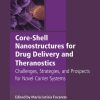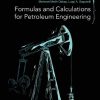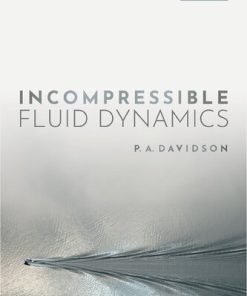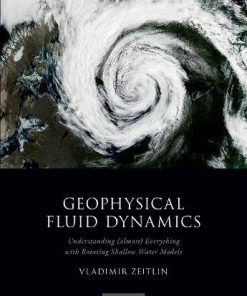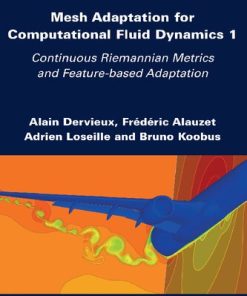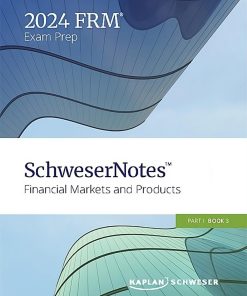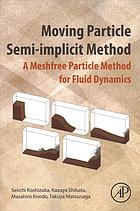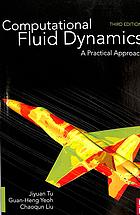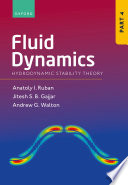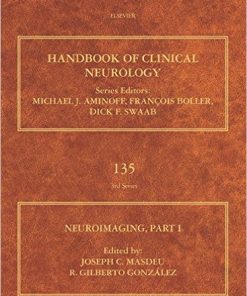(EBook PDF) Fluid Dynamics Part 3 Boundary Layers 1st edition by Anatoly Ruban 0191503983 9780191503986 full chapters
$50.00 Original price was: $50.00.$25.00Current price is: $25.00.
Fluid Dynamics: Part 3 Boundary Layers 1st edition by Anatoly I. Ruban – Ebook PDF Instant Download/DeliveryISBN: 0191503983, 9780191503986
Full download Fluid Dynamics: Part 3 Boundary Layers 1st edition after payment
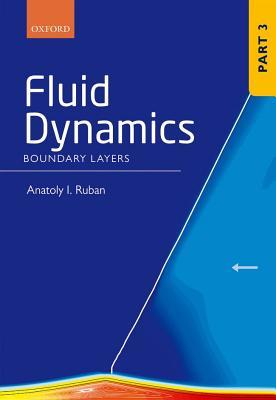
Product details:
ISBN-10 : 0191503983
ISBN-13 : 9780191503986
Author : Anatoly I. Ruban
This is the third volume in a four-part series on Fluid Dynamics: PART 1: Classical Fluid Dynamics PART 2: Asymptotic Problems of Fluid Dynamics PART 3: Boundary Layers PART 4: Hydrodynamic Stability Theory The series is designed to give a comprehensive and coherent description of fluid dynamics, starting with chapters on classical theory suitable for an introductory undergraduate lecture course, and then progressing through more advanced material up to the level of modern research in the field. The notion of the boundary layer was introduced by Prandtl (1904) to describe thin viscous layers that form on a rigid body surface in high-Reynolds-number flows. Part 3 of this series begins with the classical theory of the boundary-layer flows, including the Blasius boundary layer on a flat plate and the Falkner-Skan solutions for the boundary layer on a wedge surface. However, the main focus is on recent results of the theory that have not been presented in texbooks before. These are based on the so-called “triple-deck theory” that have proved to be invaluable in describing various fluid-dynamic phenomena, including the boundary-layer separation from a rigid body surface.
Fluid Dynamics: Part 3 Boundary Layers 1st Table of contents:
1 Classical Boundary-Layer Theory
1.1 Flow Past a Flat Plate
1.1.1 Asymptotic analysis of the flow
1.1.2 Blasius solution
Exercises 1
1.2 Prandtl’s Hierarchical Strategy
1.2.1 Outer inviscid flow region
1.2.2 Boundary layer
1.2.3 Matching procedure
1.2.4 Displacement effect of the boundary layer
Exercises 2
1.3 Solutions of Falkner and Skan
Exercises 3
1.4 Shear Layer Flows
1.4.1 Chapman’s problem
1.4.2 Entrainment effect
1.4.3 Prandtl’s transposition theorem
1.5 Laminar Jet
Exercises 4
1.6 Viscous Wake Behind a Rigid Body
1.6.1 Inviscid flow
1.6.2 Flow in the wake
1.6.3 Integral momentum equation
Exercises 5
1.7 Von Mises Variables
1.7.1 Boundary-layer equations in von Mises variables
1.7.2 Batchelor problem
Exercises 6
1.8 Flow Past a Rotating Cylinder
1.9 Numerical Solution of the Boundary-Layer Equations
1.9.1 Problem formulation
1.9.2 Crank–Nicolson method
1.9.3 Goldstein singularity
1.10 Compressible Boundary Layers
1.10.1 Boundary-layer equations
1.10.2 Self-similar solution
1.10.3 Crocco’s integral
Exercises 7
1.11 Hypersonic Boundary Layers
1.11.1 Hypersonic flow past a body with a rounded nose
1.11.2 Hypersonic boundary layers on thin bodies
1.11.3 Upstream influence through hypersonic boundary layers
Exercises 8
2 Boundary-Layer Separation
2.1 Experimental Evidence
2.2 Self-Induced Separation of Supersonic Boundary Layer
2.2.1 Formulation of the problem
2.2.2 The flow upstream of the interaction region
2.2.3 Inspection analysis of the interaction process
2.2.4 Triple-deck model
2.2.5 Upstream influence
2.2.6 Flow behind the interaction region
2.2.7 Canonical form of the interaction problem
Exercises 9
2.3 Incompressible Flow Separation from a Smooth Body Surface
2.3.1 Problem formulation
2.3.2 Flow outside the interaction region
2.3.3 Boundary layer before the interaction region
2.3.4 Viscous-inviscid interaction
2.3.5 Flow behind the interaction region
2.3.6 Canonical form of the interaction problem
Exercises 10
3 Trailing-Edge Flow
3.1 Problem Formulation
3.2 Goldstein’s Wake
3.2.1 Viscous sublayer (region 2d)
3.2.2 Main part of the boundary layer (region 2c)
3.3 Perturbations in the Inviscid Flow
3.4 Second-Order Perturbations in the Boundary Layer
3.4.1 Viscous sublayer (region 2a)
3.5 Triple-Deck Model
3.5.1 Viscous sublayer (region 3)
3.5.2 Middle tier (region 4)
3.5.3 Upper tier (region 5)
3.5.4 Interaction problem and numerical results
Exercises 11
4 Incipient Separation Near Corners
4.1 Problem Formulation
4.2 Subsonic Flow
4.2.1 Inviscid flow region
4.2.2 Boundary layer before the corner
4.2.3 Viscous-inviscid interaction region
4.2.4 Interaction problem
4.3 Supersonic Compression Ramp Flow
4.3.1 Linear problem
4.3.2 Numerical solution of the nonlinear problem
Exercises 12
5 Marginal Separation Theory
5.1 Experimental Observations
5.2 Inviscid Flow Region
5.3 Boundary Layer
5.3.1 Theoretical analysis of the boundary layer
5.3.2 Goldstein’s singularity
5.3.3 Weak singularity
5.3.4 Formation of the singularity in the boundary layer
5.4 Viscous-Inviscid Interaction
5.4.1 Upper layer (region 5)
5.4.2 Viscous sublayer (region 3)
5.4.3 Main part of the boundary layer (region 4)
5.4.4 Viscous-inviscid interaction problem
5.4.5 Numerical results
People also search for Fluid Dynamics: Part 3 Boundary Layers 1st:
fluid dynamics boundary layer
fluid mechanics boundary layer
fluid flow boundary layer
what is the boundary layer in fluid mechanics
in fluid mechanics the fluid boundary layer is defined as
Tags:
Fluid Dynamics,Boundary Layers,Dynamics,Hydrodynamic
You may also like…
Physics - Mechanics: Fluid Mechanics
Business & Economics - Professional Finance
SCHWESERNOTES™ 2024 FRM® PART I BOOK 3: FINANCIAL MARKETS AND PRODUCTS Kaplan Schweser
Science (General)
Physics - Mechanics: Fluid Mechanics


